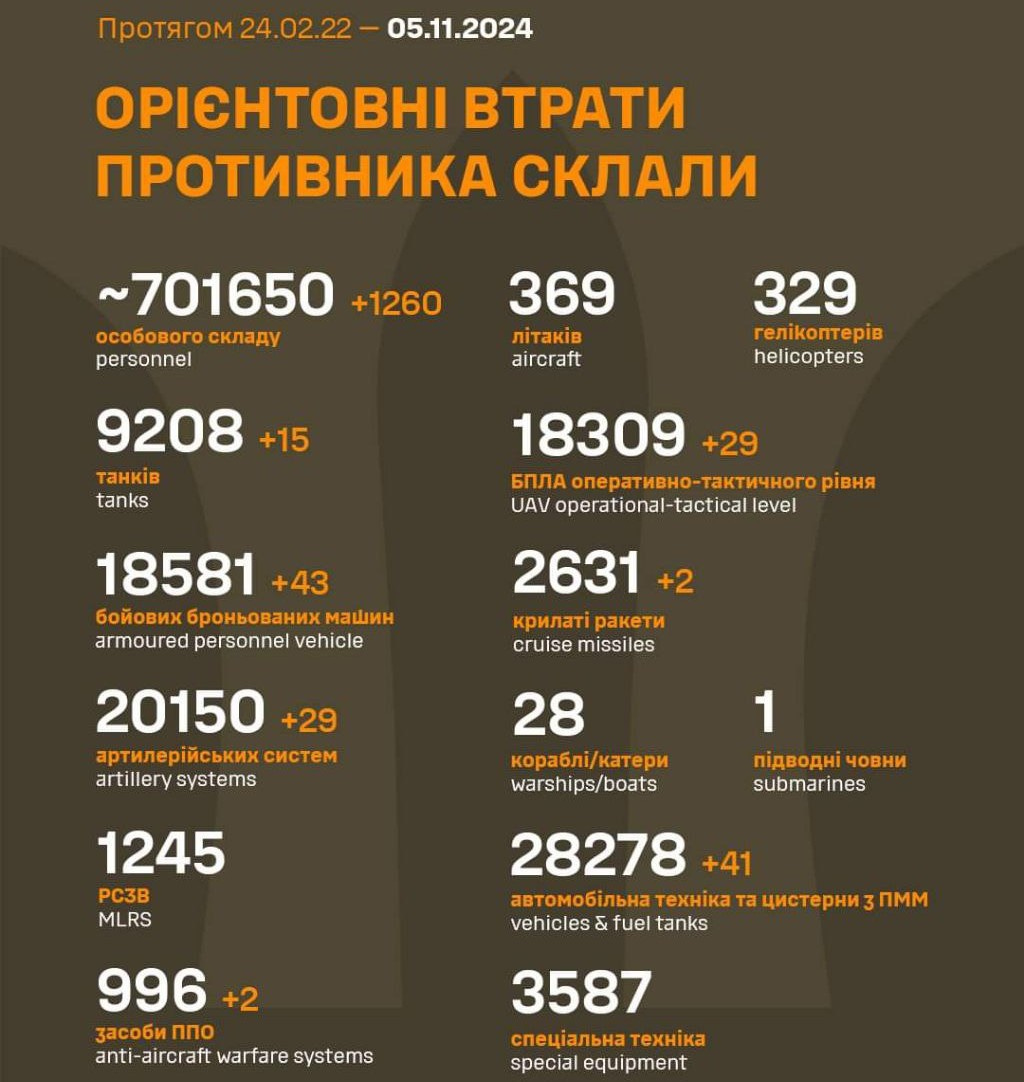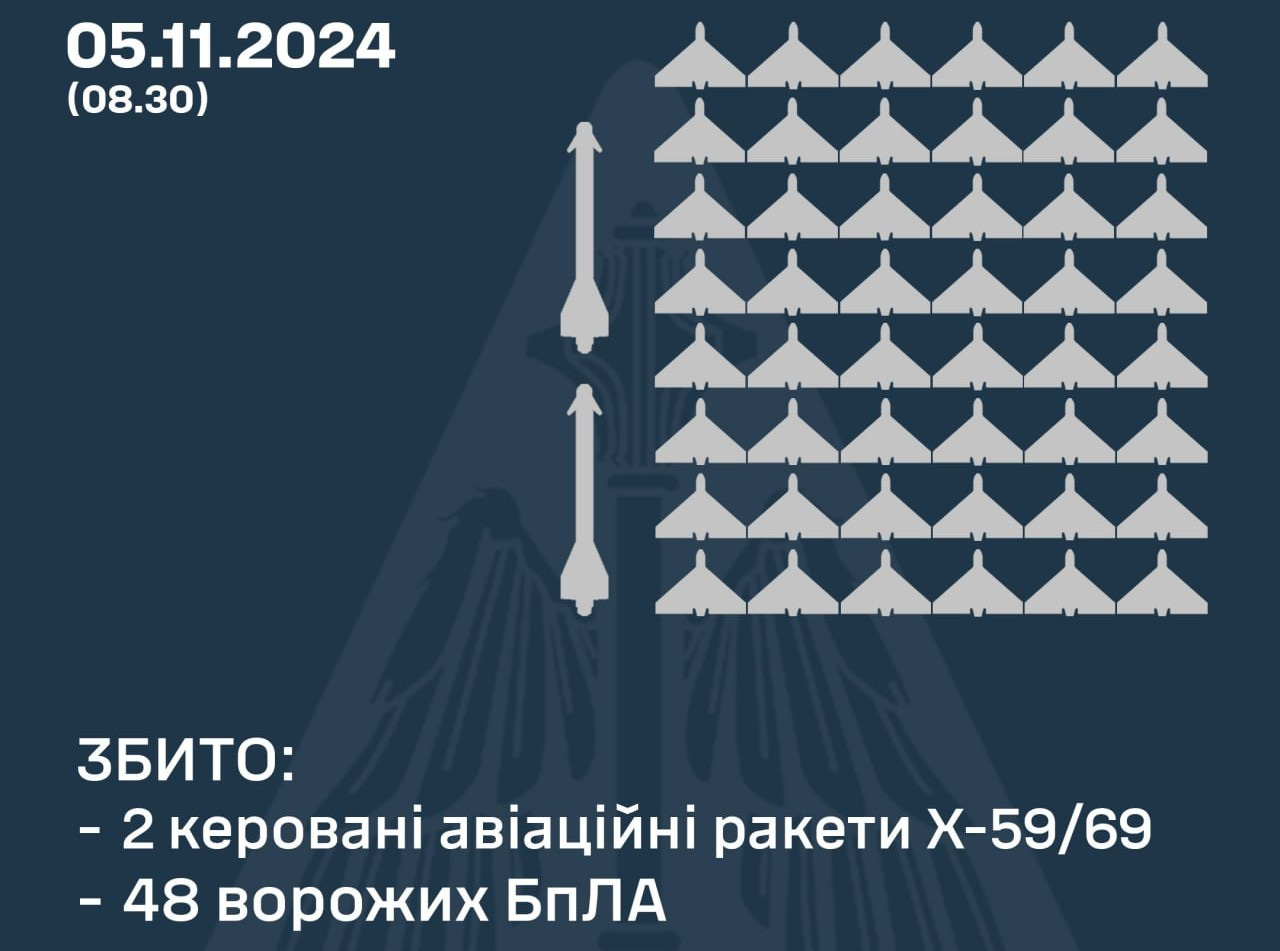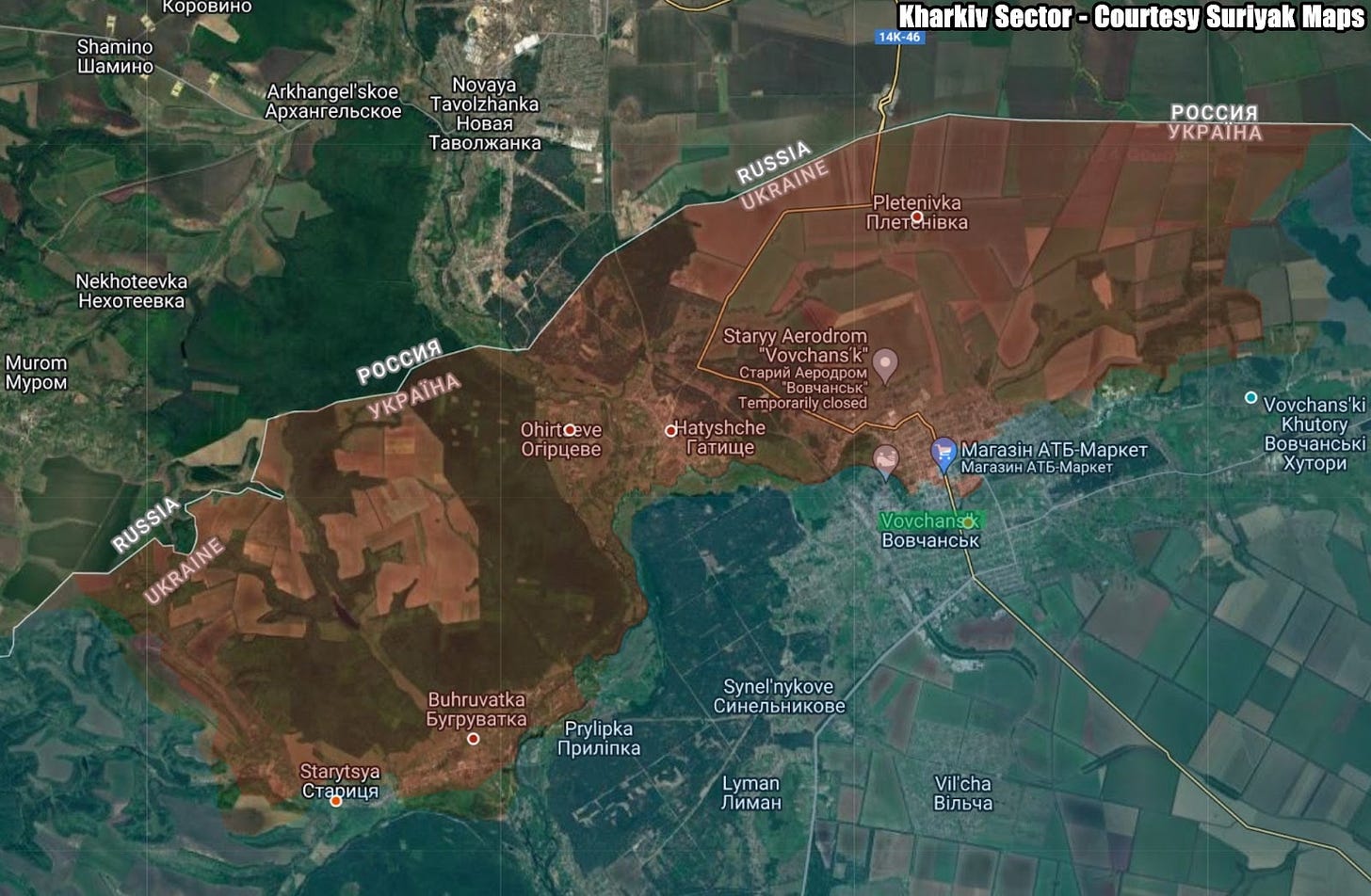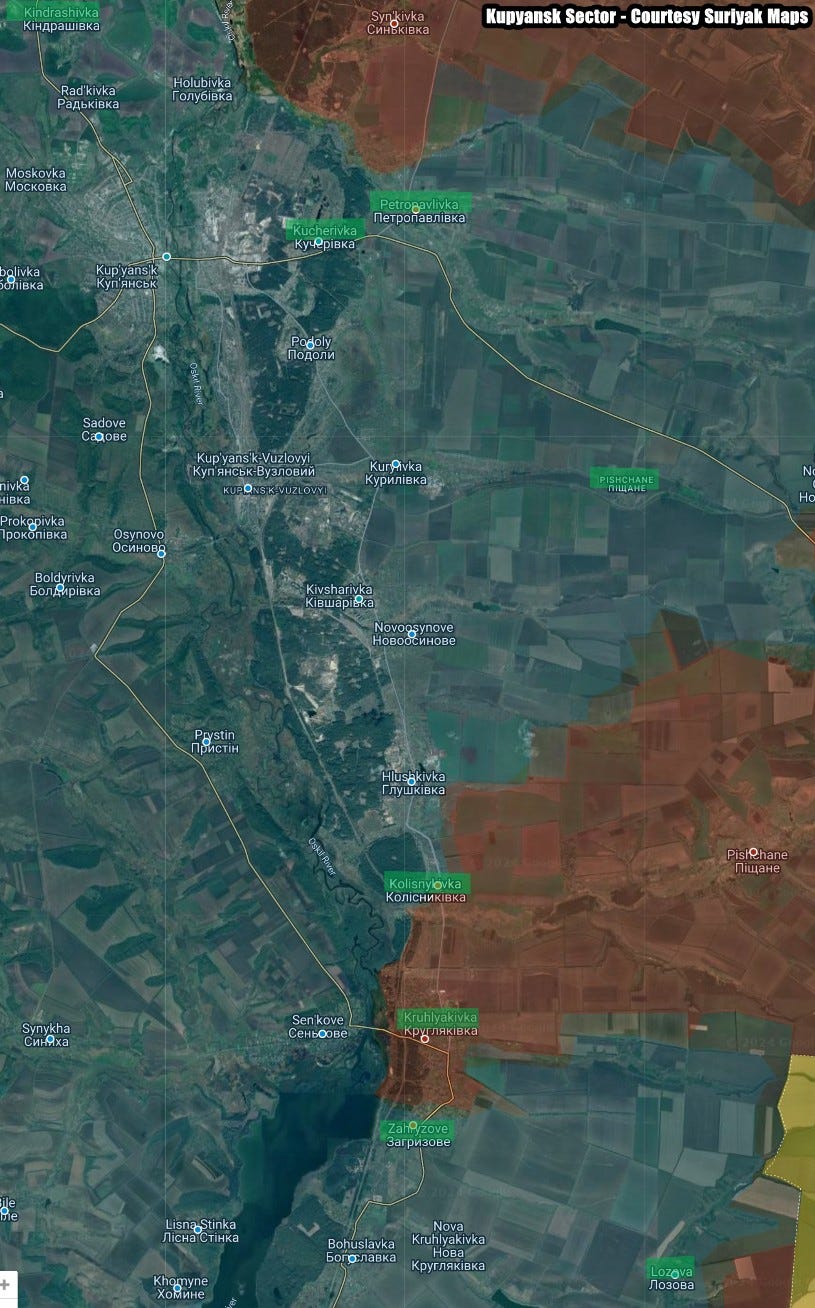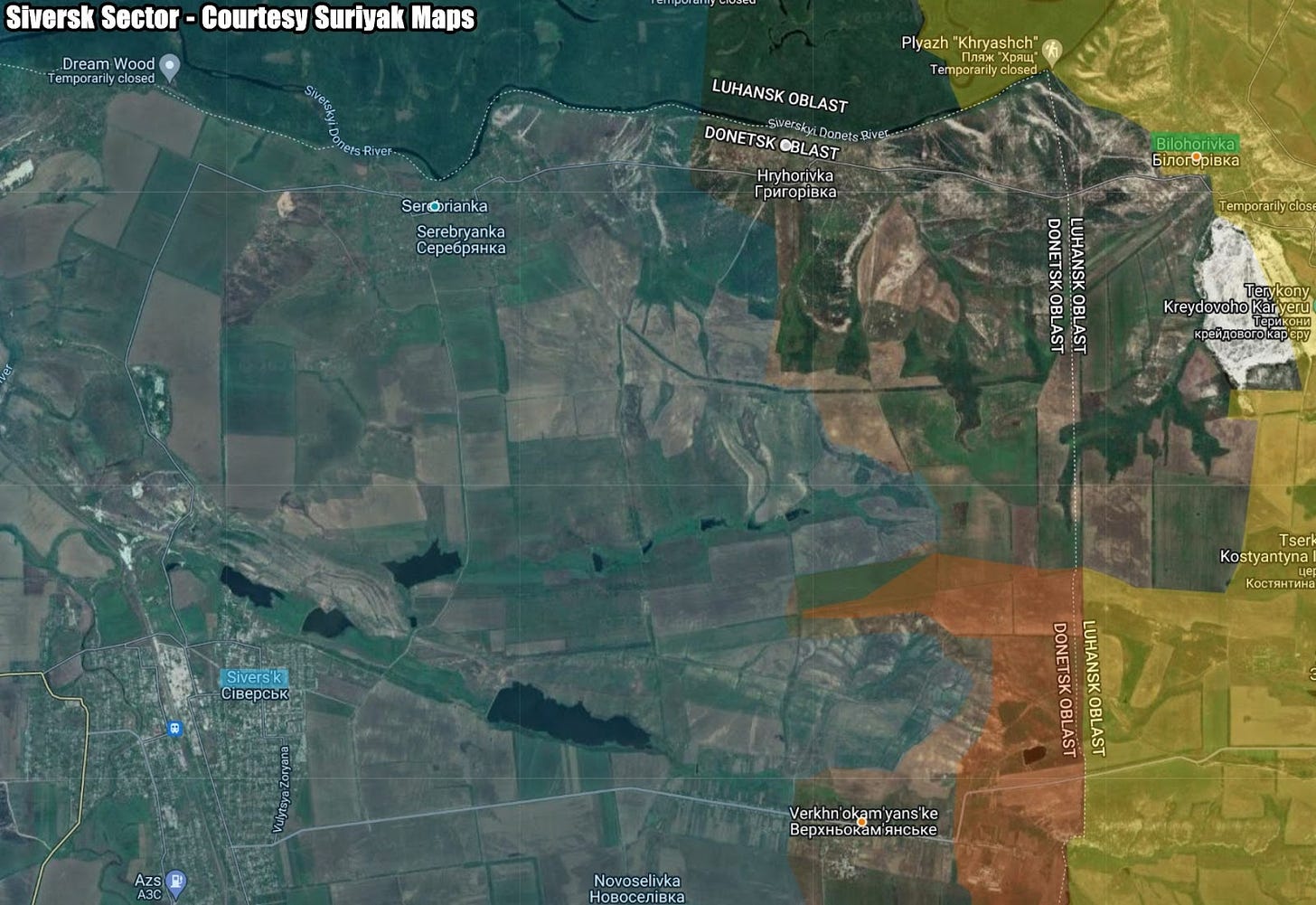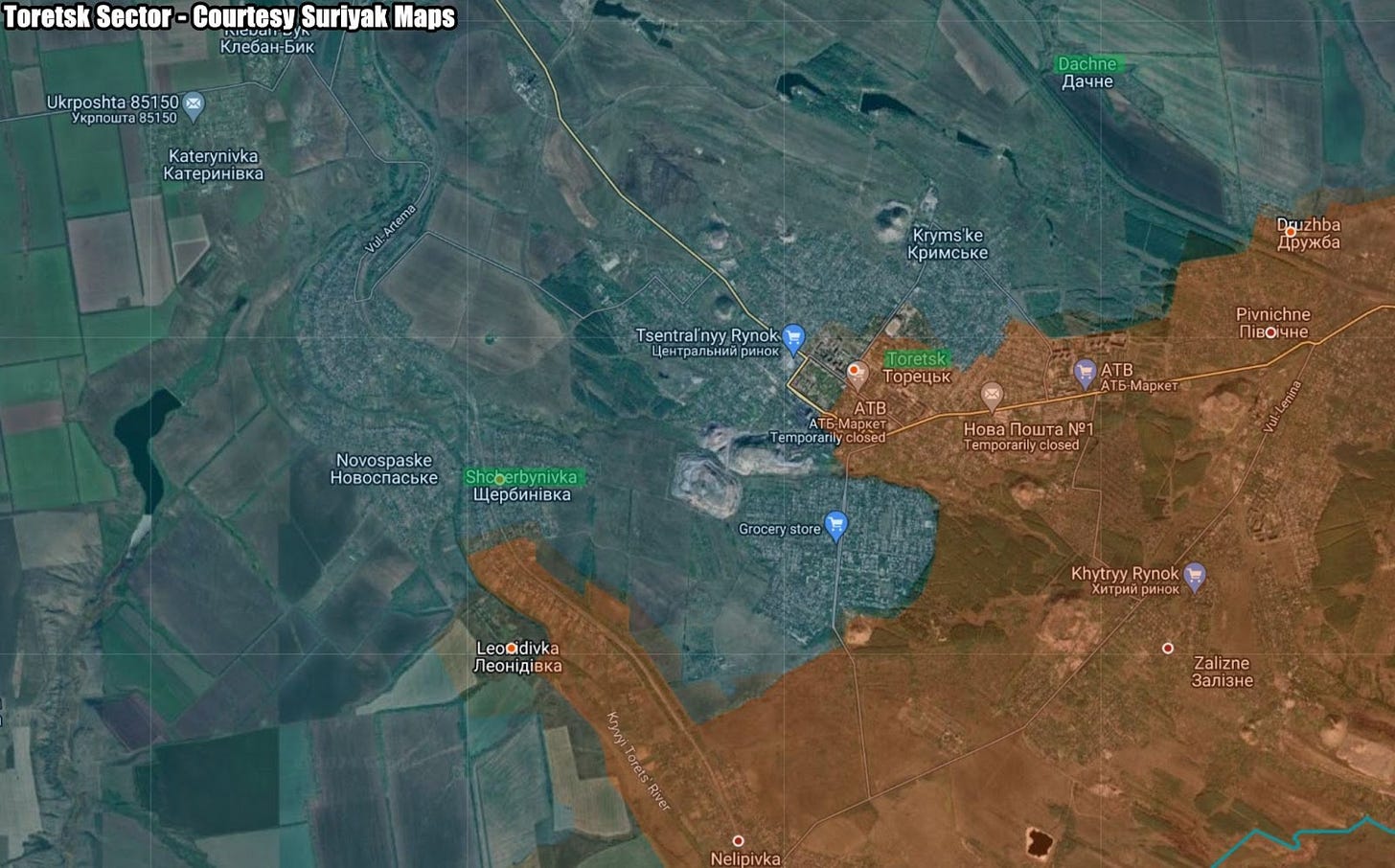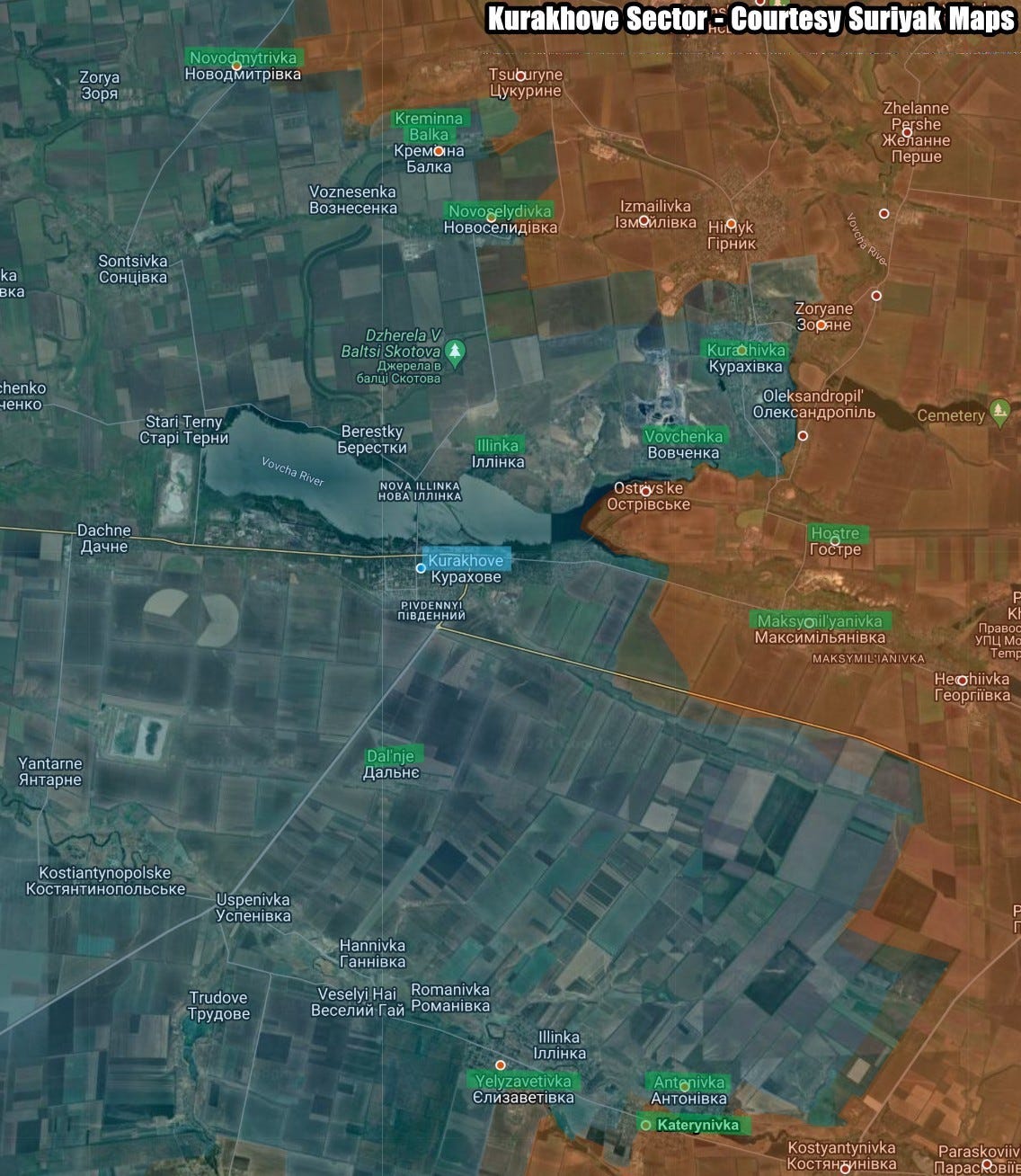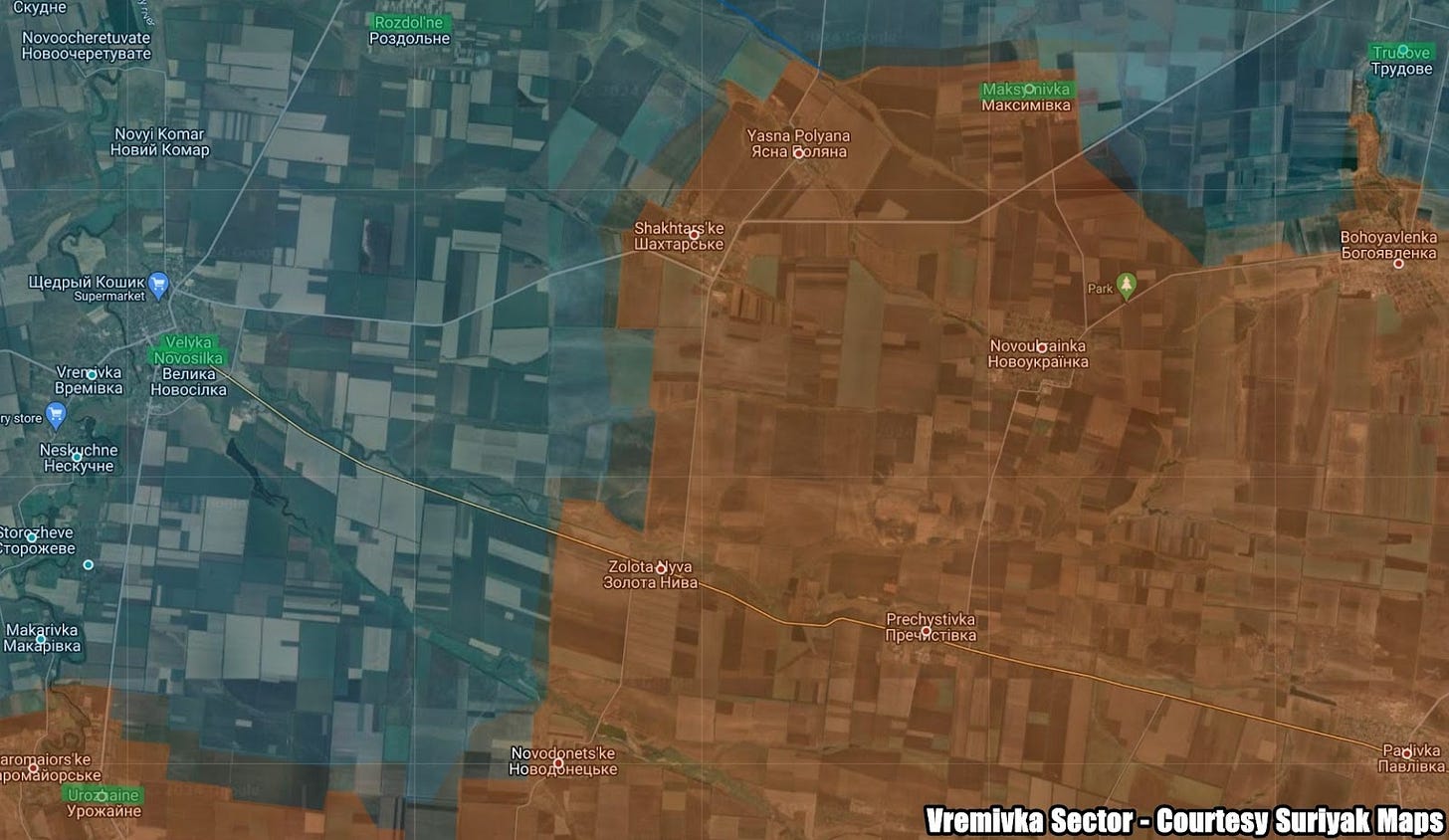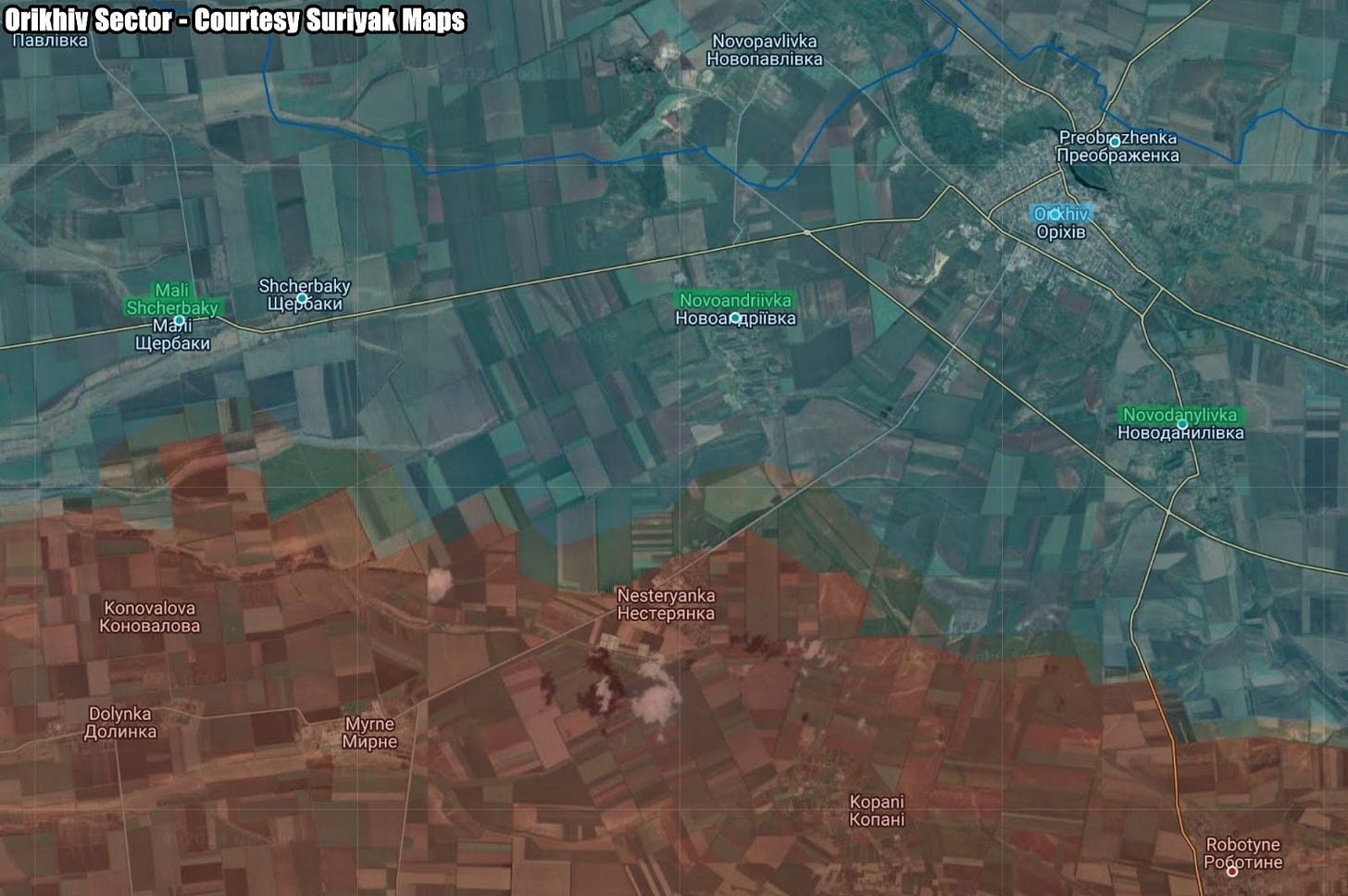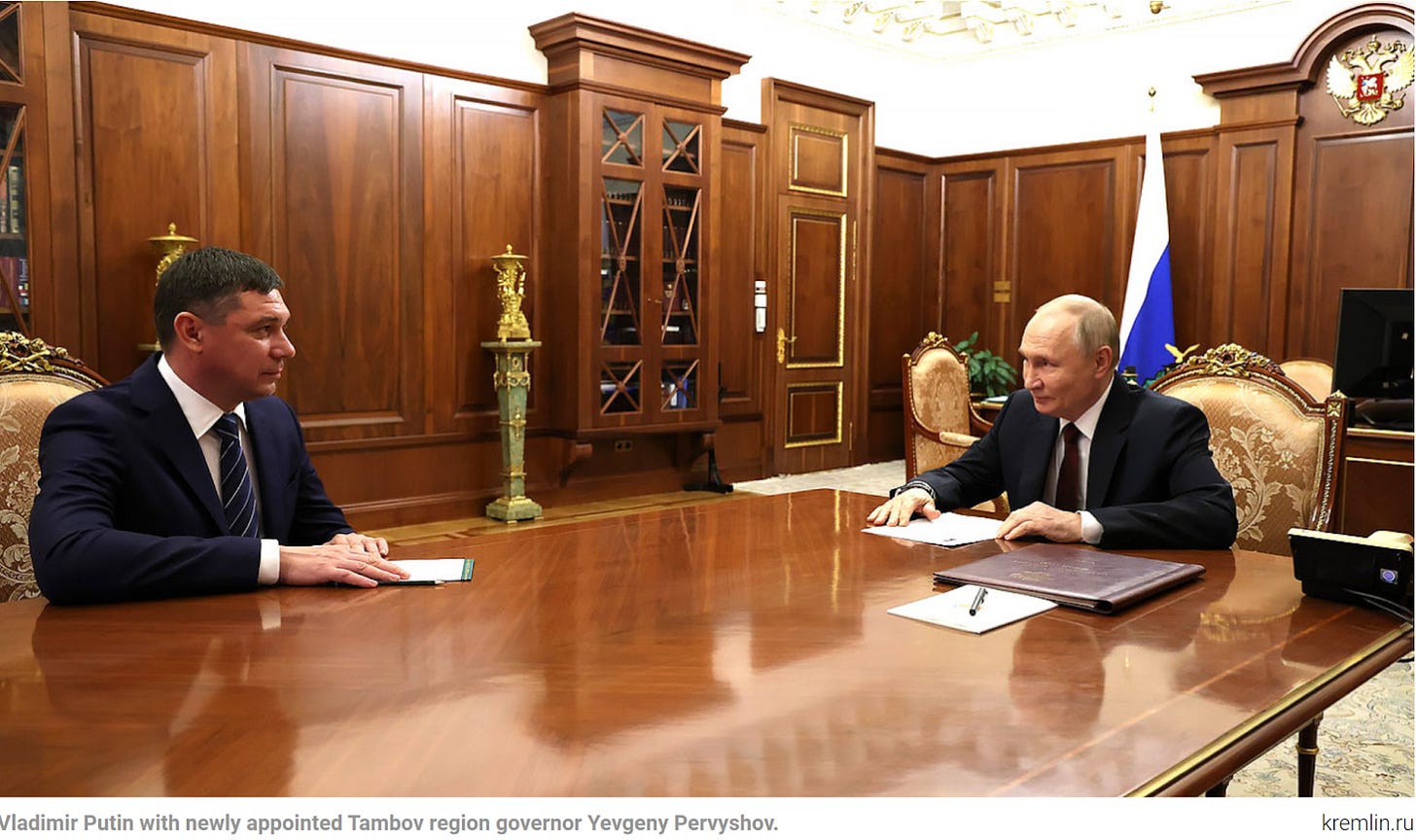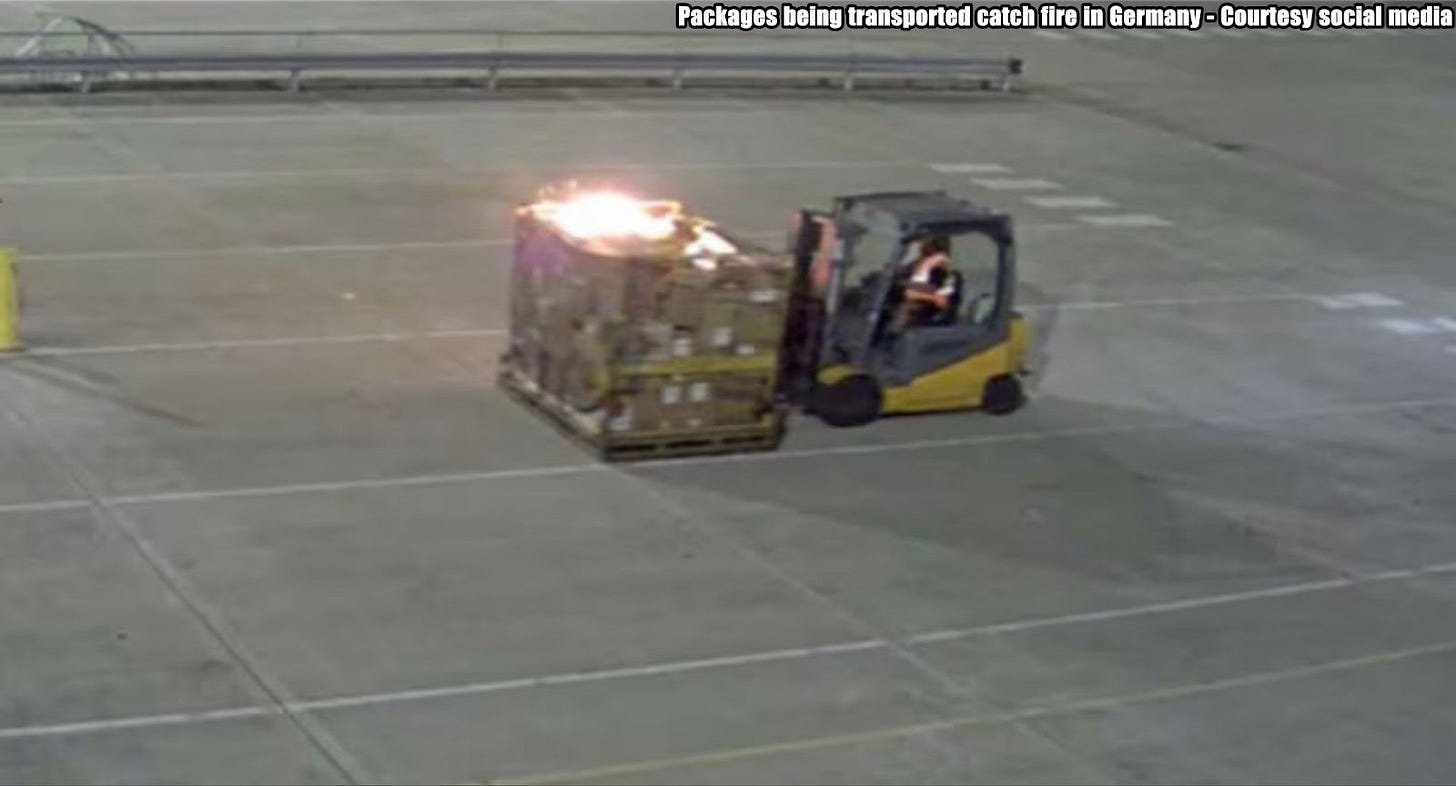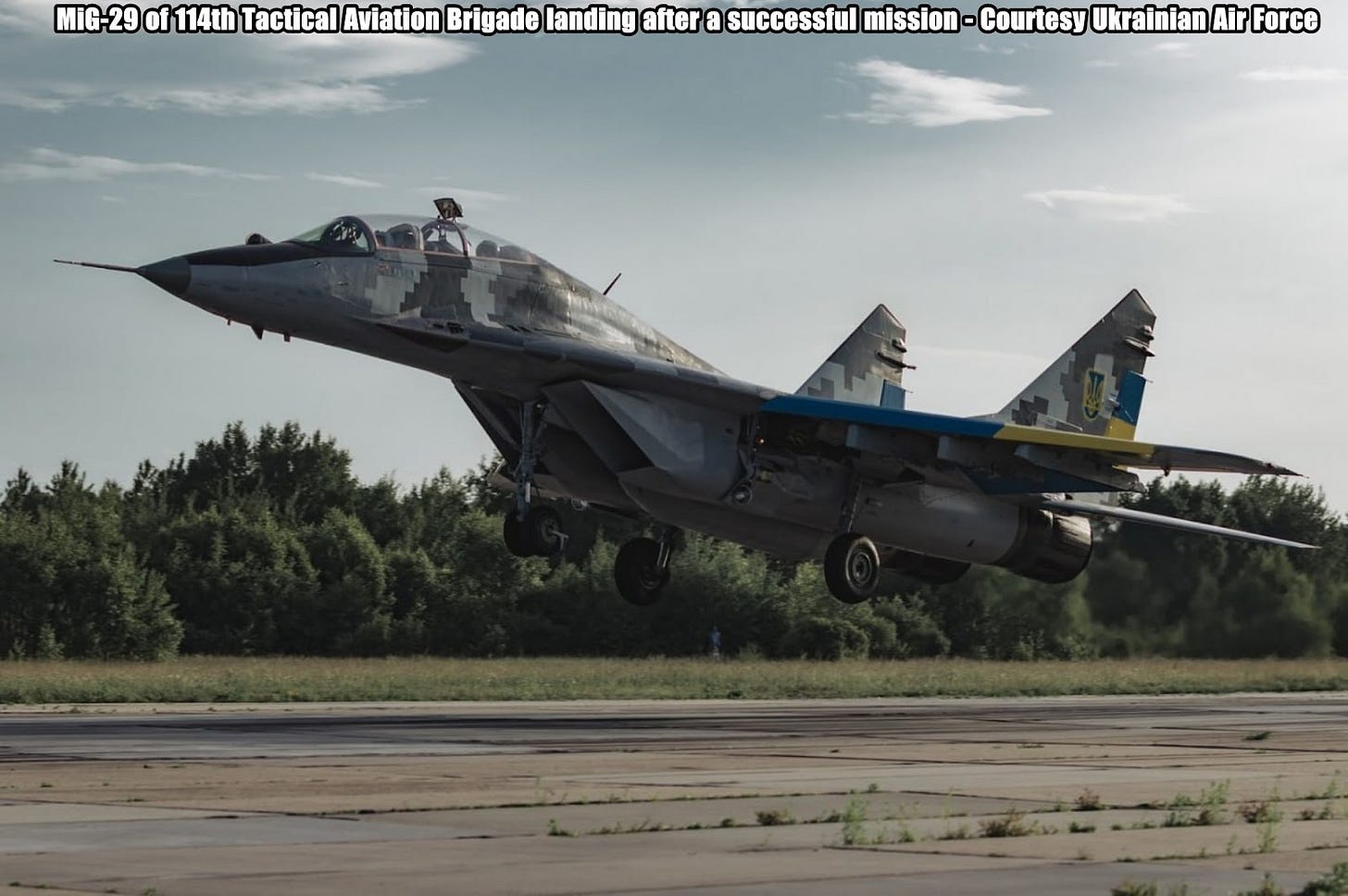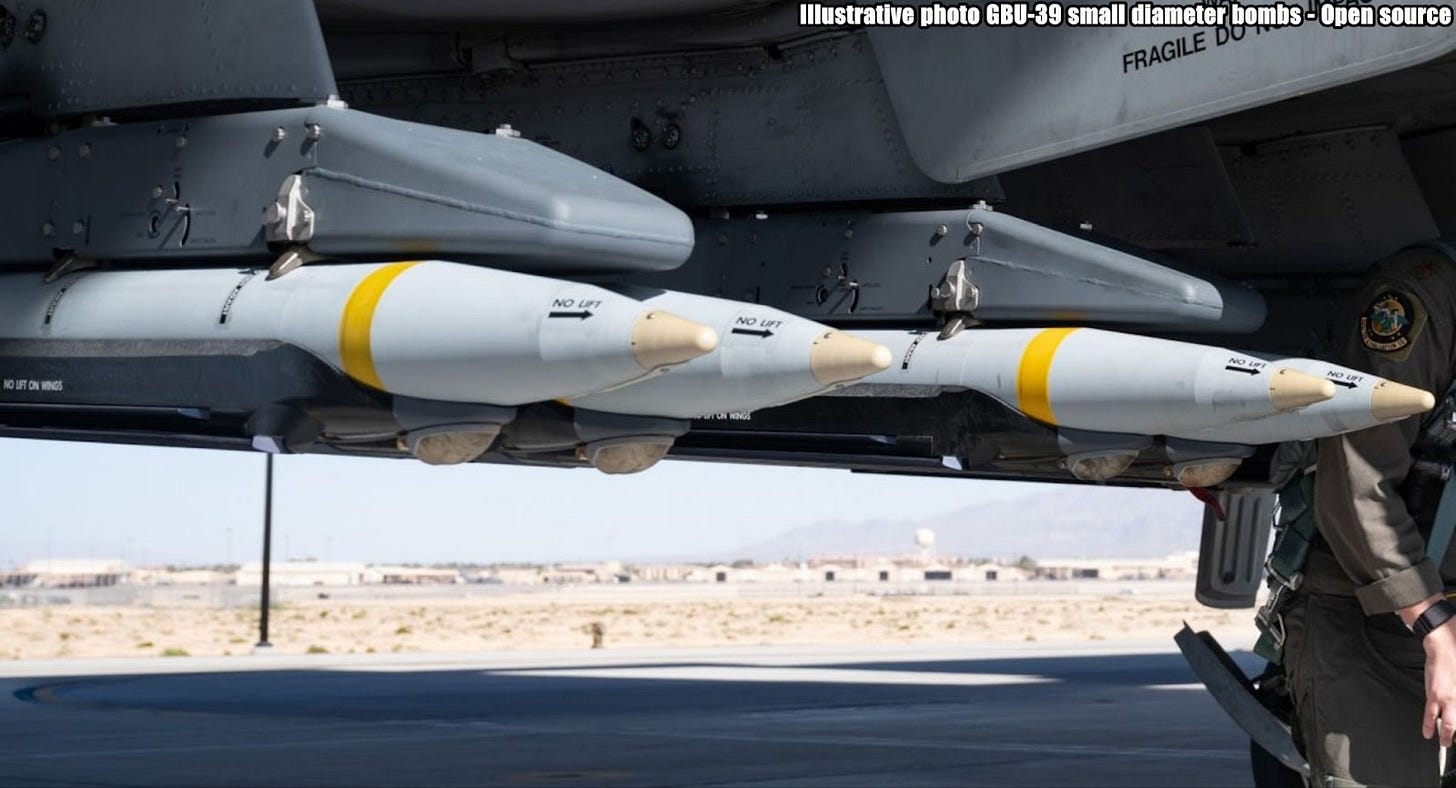Slava Ukraini! In early 2022 I began a Telegram channel aggregating news from a number of sources daily on the war in Ukraine. In June 2023 I began providing a daily draft for the Ukraine War Brief Podcast collecting news from over 70 sources daily, much of which formed the basis of the script. While the Podcast no longer exists I have continued to make this Brief available both on my own Substack and The People’s Media for those who wish to keep up with events on a daily basis.
All the latest news on the Russo-Ukraine War 6 days per week
ALONG THE CONTACT LINE
GSAFU Morning Report
GSAFU Morning Report
The General Staff of the Armed Forces of Ukraine in its Operational Information update at 22:00 on Nov 4 stated that day 976 of the full-scale invasion of the Russian Federation against Ukraine was about to begin.
During the past day, 226 combat engagements took place. Over the past 24 hours, the enemy carried out 11 air strikes, 206 drone strikes and more 2,400 than artillery strikes across the positions of Ukrainian forces.
At the same time, Ukrainian soldiers continue to inflict losses in manpower and equipment on the occupying troops, exhausting the enemy along the entire front line and continue to disrupt the plans of Russian occupiers to advance deep into the territory of Ukraine.
Air Force Daily Report
48 ENEMY UAVS AND TWO GUIDED AVIATION MISSILES WERE BROKEN DOWN
On the night of Nov 5, 2024 (from 8:00 p.m. on Nov 4), the enemy attacked Odesa with two Kh-59/69 guided air missiles from the Black Sea, attacked Kharkiv Oblast with guided air bombs, launched 79 Shahed-type attack UAVs and unmanned aerial vehicles of an unknown type from directions Bryansk, Kursk, Orel - Russian Federation.
The air attack was repulsed by anti-aircraft missile troops, aviation, electronic warfare units, mobile fire groups of the Air Force and the Defense Forces of Ukraine.
As of 08:30, the downing of two Kh-59/69 guided air missiles and 48 enemy UAVs in the Odesa, Kyiv, Sumy, Poltava, Zhytomyr, Cherkasy, Chernihiv and Khmelnytsky regions has been confirmed.
30 enemy drones were lost in various regions of Ukraine, one more returned to Russia.
Air defence of the Ground Forces over the past week destroyed 177 enemy air reconnaissance and attack vehicles, namely:
🔸 Unmanned aerial vehicle Shahed-131/136 — 139 units;
🔸BpLA Orlan 10/30 — 7 units;
🔸BpLA Zala — 13 units;
🔸Supercam UAV — 8 units;
🔸BpLA "Lancet" — 7 units;
🔸BpLA "Molniya" — 2 units.
🔸BpLA "Privit82" — 1 unit.
In total, in the previous month (October), air defence calculations of units of the Ground Forces destroyed 729 UAVs, 464 of which were Shahed-131/136.
The Russian Border Incursion
The Institute for the Study of War (ISW), a US based think tank, in its Nov 4 Russian Offensive Campaign Assessment reported that Ukrainian and Russian forces continued fighting in the main Ukrainian salient in Kursk Oblast on Nov 3 and 4, but there were no recent changes to the frontline. Geolocated footage published on Nov 3 reportedly shows Russian forces striking a Ukrainian position in eastern Martynovka (northeast of Sudzha), indicating that Ukrainian forces continue to operate in the area.
Russian sources, including the Russian Ministry of Defense (MoD), claimed that Russian forces attacked southeast of Korenevo near Darino, Leonidovo, Nikolayevo-Darino, and Novoivanovka; and southeast of Sudzha near Plekhovo. Russian sources claimed that Ukrainian forces attacked near Novoivanovka, Leonidovo, and Plekhovo, and northwest of Sudzha near Pogrebki. A Russian milblogger attributed the lack of changes on the frontline to deteriorating weather conditions, likely with the onset of the Fall mud season.[24] Ukrainian Center for Countering Disinformation Head Lieutenant Andriy Kovalenko reported on November 4 that North Korean servicemen "came under fire" in Kursk Oblast but did not offer further specifics.
Russian forces recently marginally advanced west of the main Ukrainian salient in Kursk Oblast, although Ukrainian and Russian sources did not report fighting in the Glushkovsky Raion on Nov 3 and 4. Geolocated footage published on Nov 4 shows Ukrainian forces striking Russian forces west of Novyi Put (southwest of Glushkovo), indicating that Russian forces advanced in the area.
First clash between Ukrainian Armed Forces and North Korean troops near Kursk
Sources in Defence Intelligence of Ukraine (HUR) have confirmed that the first clash between Ukrainian forces and North Korean troops has taken place in Russia’s Kursk Oblast. The Financial Times reports.
Ukrainian officials said on Monday that their forces had engaged North Korean soldiers in combat for the first time since their deployment by Russia to its western Kursk region.
The clashes mark the first direct intervention by a foreign army since Russia’s full-scale invasion of Ukraine began in 2022, as well as an expansion of what was already the largest land war in Europe since the second world war.
“The first military units of the DPRK [Democratic People’s Republic of Korea] have already come under fire in Kursk,” Andriy Kovalenko, Ukraine’s top counter-disinformation official within the national security council, said on Telegram. A senior Ukrainian intelligence official confirmed the military engagement to the Financial Times but declined to provide further details.
In Kyiv, foreign minister Andrii Sybiha said he had discussed with his visiting German counterpart Annalena Baerbock the “need for decisive action” in response to North Korea’s deepening involvement in the war.
“We urge Europe to realise that the DPRK troops are now carrying [out] an aggressive war in Europe against a sovereign European state,” Sybiha said in a news conference.
The US on Monday called out Russia and China at the UN Security Council for “shamelessly protecting” and emboldening North Korea. South Korea and the EU also condemned the deployment and expressed concern that Russia could reward North Korea with transfers of nuclear and ballistic technology.
Another senior Ukrainian official told the FT that Moscow was already providing military technologies to Pyongyang to help with its missile programmes, as well as “money”.
In Moscow, Russian President Vladimir Putin met North Korea’s foreign minister, Choe Son-hui, in the Kremlin on Monday.
Choe passed on a greeting from North Korean leader Kim Jong Un, who has backed Russia’s invasion of Ukraine and signed a treaty with Putin in June that includes a mutual security assistance clause.
Putin has not confirmed the North Korean deployment but he hinted at it last month, indicating it fell under the security provisions in the treaty.
Kyiv, Washington and Seoul said that Pyongyang had sent roughly 12,000 troops in all to Russia for its ongoing war effort, including 500 officers and three generals. The remaining forces are located in Russia’s far east, where they are undergoing training.
The White House has said that the North Koreans would become “legitimate military targets” if they entered the fight against Ukraine.
The senior Ukrainian intelligence official declined to provide specifics about the first military engagement between his country’s forces and the North Koreans. But he said that it occurred within Russia’s Kursk region, where Ukraine controls some 600 sq km of territory, or a little more than half of what it previously held following the summer incursion that took Moscow by surprise.
Ukraine’s military intelligence directorate, the HUR, said over the weekend that Russia had armed the North Korean troops in Kursk with 60mm mortars, assault rifles, machine guns, sniper rifles, anti-tank guided missiles and shoulder-launched anti-tank rocket launchers. The HUR said that some were also provided with night-vision devices and thermal imagers. A few hundred troops from North Korea’s special forces have also been deployed in Kursk.
Ukrainian officials and military analysts have raised questions about the quality and combat effectiveness of the North Korean troops, with most being described as inexperienced, low-ranking soldiers.
“We will know soon” how well they can fight, said one of the officials on Monday.
The Khortytsia operational-strategic group
(Responsible for the northeastern part of Ukraine. )
Kharkiv Sector: Over the last day Ukrainian Defense Forces repelled 8 Russian attacks in the area of Vovchansk.
Kupyansk Sector: Russian Forces carried out 19 offensive actions against Ukrainian defensive positions near Kindrashivka, Kucherivka, Petropavlivka, Pishchane, Kolisynivka, Kruhlyakivka, Zahryzove, Lozova and Vyshneve [not shown on map].
Lyman Sector: Russian Forces carried out 31 offensive actions against Ukrainian defensive positions near Chervonyi Stav, Hrekivka, Makiivka, Katerynivka, Terny, Zarichne and Torske
Siversk Sector: Russian forces carried out 1 unsuccessful offensive action near Bilohorivka.
Kramatorsk Sector: Russian forces carried out 5 unsuccessful offensive actions against Ukrainian defences in the vicinity of Chasiv Yar and Stupochky.
Toretsk Sector: Russian forces carried out 7 offensive actions with air support near Dachne, Toretsk and Shcherbynivka. 1 engagement continues.
The Tavria operational-strategic group
(Responsible for the central-eastern and southeastern part of Ukraine.)
Pokrovsk Sector : Russian forces carried out 21 offensive actions in the vicinity of Promin, Lysivka, Vyshneve, Selydove and Yuriivka. 4 engagements continue.
Kurakhove Sector: Russian forces carried out 84 offensive actions in the vicinity of Novodmytrivka, Kreminna Balka, Novoselydivka, Kurakhivka, Vovchenka, Illinka, Hostre, Maksymilyanivka, Dalnje, Katerynivka and Antonivka and Yelyzavetivka. Several engagements continue.
Vremivka Sector: Russian forces made 16 attempts to break through Ukrainian defences in the vicinity of Trudove, Maksymivka, Rozdolne, Velyka Novosilka and Urozhaine.
Orikhiv Sector: In this sector, over the last day, Russian forces made 6 unsuccessful attempts to dislodge Ukrainian units from their positions near Mali Shcherbaky, Novoandriivka and Novodanylivka
The Odesa operational-strategic group
(Responsible for Kherson, Qırım, (also known as Crimea) and the Black Sea.)
Prydniprovsk Sector: In this sector, over the last day, there has been no significant change in the combat environment. Russian forces made 3 unsuccessful attempts to dislodge Ukrainian units from their positions on the left bank of the Dnipro.
TEMPORARILY OCCUPIED TERRITORIES
Nothing major to report.
THE HOME FRONT
Deadly Russian missile attack on Zaporizhzhia kills six, injures 23
Six civilians were killed and 23 injured after Russian forces launched a missile strike on Zaporizhzhia on 5 November, Euromaidan press reports, citing local authorities.
Zaporizhzhia Oblast Military Administration chief Ivan Fedorov reported that the attack targeted an infrastructure facility, with a fire breaking out at the impact site. The regional prosecutor’s office confirmed that Russian military forces conducted the missile strike on civilian infrastructure during the morning hours, damaging a critical infrastructure facility.
According to regional authorities, the number of injured initially stood at two, then rose to nine, and ultimately reached 23 people as more information became available as of 14:00.
The attack occurred after an air raid alert was announced at 9:06 in Zaporizhzhia, with Fedorov warning of ballistic missile threats. The Ukrainian military-linked Telegram channel Hnyla Chereshnia reported an incoming target from Russia’s Taganrog, a city on the Azov Sea coast.
The explosion in Zaporizhzhia city was recorded at approximately 9:37, according to public broadcaster Suspilne, Fedorov, and the head of the Zaporizhzhia City Council, Regina Kharchenko.
RUSSIAN WORLD
Governors of several Russian Regions Resign, Kicking Off Regional Shake-Up
The governors of Russia’s Rostov and Tambov regions announced their resignations on Monday, kicking off what political analysts refer to as “gubernatorpad,” or President Vladimir Putin’s annual shakeup of regional heads. The Moscow Times reports.
“Today, the country’s leadership is setting other tasks for me at the federal level that will need to be carried out,” Tambov region Governor Maksim Egorov said in a video message posted on Telegram.
Putin appointed Egorov as acting governor of the central Tambov region in October 2021, and the following year he was elected to office. Tambov is located around 400 kilometers (250 miles) southeast of Moscow.
Meanwhile, in the southern Rostov region, governor Vasily Golubev said he was stepping down “due to a transfer to another job.”
Vasily Golubev became governor of the Rostov region in 2010, making him one of Russia’s longest-serving governors. Rostov, which is home to the Russian military’s command center for the war in Ukraine, has faced regular drone strikes since the full-scale invasion and was briefly seized by Wagner mercenaries in June 2023 during their failed mutiny.
Later on Monday, Putin appointed Yury Slyusar, CEO of the United Aircraft Corporation, a defense company, as acting governor of the Rostov region. In the Tambov region, the Kremlin leader appointed Ukraine war veteran and former mayor of Krasnodar, Yevgeny Pervyshov, as acting governor.
Those appointments came amid local media reports in the Rostov region that Federal Security Service (FSB) agents questioned Golubev in his office and may have confiscated documents related to major construction projects in the region.
“There was a search [at Golubev’s office], but a quiet one. They [FSB agents] arrived, went in, talked to him, [but] it’s not clear what exactly they were looking for,” an anonymous government source was quoted as saying by local media.
INTERNATIONAL NEWS
Russia suspected of Terrorist plot to install incendiary devices on US and Canadian bound planes
Two devices that ignited in Europe, officials say, were part of a covert operation to put them on cargo or passenger aircraft, the Wall Street Journal reports.
Western security officials say they believe that two incendiary devices, shipped via DHL, were part of a covert Russian operation that ultimately aimed to start fires aboard cargo or passenger aircraft flying to the U.S. and Canada, as Moscow steps up a sabotage campaign against Washington and its allies.
The devices ignited at DHL logistics hubs in July, one in Leipzig, Germany, and another in Birmingham, England. The explosions set off a multinational race to find the culprits.
Authorities are taking the incidents seriously, and intelligence agencies are expecting Moscow to try and stage similar acts of sabotage in the future, one of the people said. They asked not to be named discussing the intelligence matter.
Poland’s National Prosecutor’s Office has said in a statement on its website that it’s investigating the alleged involvement of a foreign intelligence service in sabotage activities on the territory of Poland and other European Union members states and the UK but didn’t specify Russia as the perpetrator. The Wall Street Journal reported earlier Monday on Moscow’s alleged goal of ultimately targeting the US.
As part of the probe launched on Aug. 5, authorities have arrested four people linked to a sabotage group, whose activities included sending parcels containing camouflaged explosives and dangerous materials via courier companies to countries in the EU and the UK. Bloomberg reported.
The parcels would ignite or detonate during land or air transport. “The group’s goal was to test the transfer channel for this type of shipments, which were ultimately to be sent to the US and Canada,” according to the statement.
Alexa Lopez, a spokeswoman for the US Transportation Safety Administration, said in a statement that “over the past several months, as part of a multilayered security approach, TSA worked with industry partners to put additional security measures for US aircraft operators and foreign air carriers regarding certain cargo shipments bound for the United States.”
Governments across Europe have been raising alarm over a growing threat of Russia-sponsored acts of sabotage and destabilisation since the Kremlin launched its full-scale invasion of Ukraine more than two and a half years ago. Russia has repeatedly denied involvement in such efforts.
Ukrainian Legion to begin training in Poland by end of 2024
The first unit of the Ukrainian Legion will begin training at one of the training grounds in Poland by the end of 2024. Ukrinform reports.
According to the agency at the recruitment centre, the first volunteers will soon, this year, sign contracts with the Armed Forces at the centre in Lublin, and they will be sent to one of the landfills in Poland for further instruction. The contract can be signed either for a fixed term (for three years) or until the end of a special period.
Preparations will not take place on the basis of the Lithuanian-Polish-Ukrainian Brigade (LitPolUkrbrig), as some media outlets have previously written about it, and training will be conducted by NATO instructors in certain places.
After that, servicemen who will need a separate training on the selected specialisation, can undergo additional training at other landfills.
By bilateral agreement, the Ukrainian side provides the Legion volunteers with military uniforms and medicines, and the Polish – provides the appropriate infrastructure, equipment and weapons for the period of study. As of today, the question is whether Poland will take responsibility for the full equipment of this volunteer unit with its equipment and weapons for their further service in Ukraine in the combat zone.
MILITARY & TECH
Ukraine to receive first Canada-ordered NASAMS system by year-end
On 4 November, President Volodymyr Zelenskyy announced that the first NASAMS air defence system ordered by Canada for Ukraine has been shipped, with expected delivery by the end of this year. Canadian Prime Minister Justin Trudeau informed him about the shipment during their phone conversation. Euromaidan Press reports.
In late 2023, Zelenskyy stated that NASAMS and Patriot systems proved highly effective in Ukraine. In April 2024, amid intensified Russian air attacks, Zelenskyy urged allies to provide as many air defence systems as possible, stressing that Ukraine needs 25 Patriot systems to fully secure its airspace. He noted that even an immediate supply of seven systems would significantly boost Ukraine’s defence capabilities.
NASAMS, a mobile air defence system from Norway and the US, targets UAVs, ballistic missiles, helicopters, aircraft, and cruise missiles at medium to low altitudes, with a 180 km range and 21 km altitude capability, effective in all weather.
Grumpy Here - For your information - The system in question was ordered and purchased by Canada approximately a year ago but has been awaiting manufacture in the US.
Ukrainian Air Force Struck Russian Troops with Eight GBU-39 Bombs
Ukrainian aviation continues to work on all directions of the frontline. A MiG-29 fighter of the 114th Tactical Aviation Brigade struck Russian assault groups and an ammunition depot in the Orikhiv sector with eight GBU-39 bombs. Defense Express reports.
"The advantage of the GBU-39 bombs is their ability to be dropped on different locations that may be far apart," the statement reads.
The GBU-39 Small Diameter Bomb is a US manufactured 250-pound (110 kg) precision-guided glide bomb that is intended to allow aircraft to carry a greater number of smaller, more accurate bombs. The GBU-39 entered service in 2006.
The operation was a success.
That’s it for today’s Draft folks if you would like to keep up with events in Ukraine daily please consider subscribing, its free!
Feel free to share this update with your friends. Heroyam Slava!







